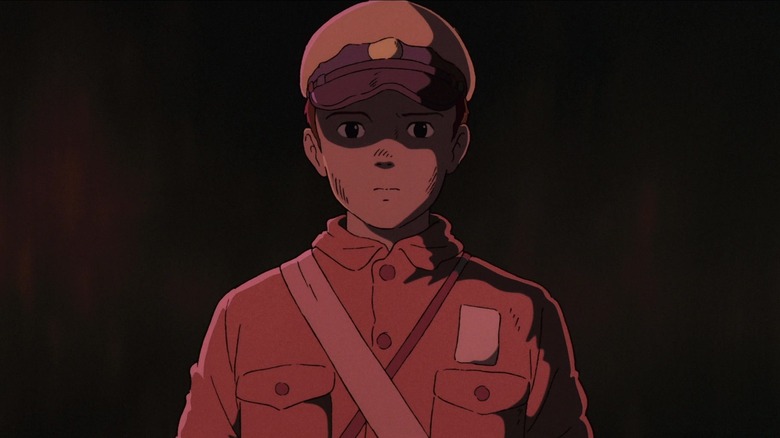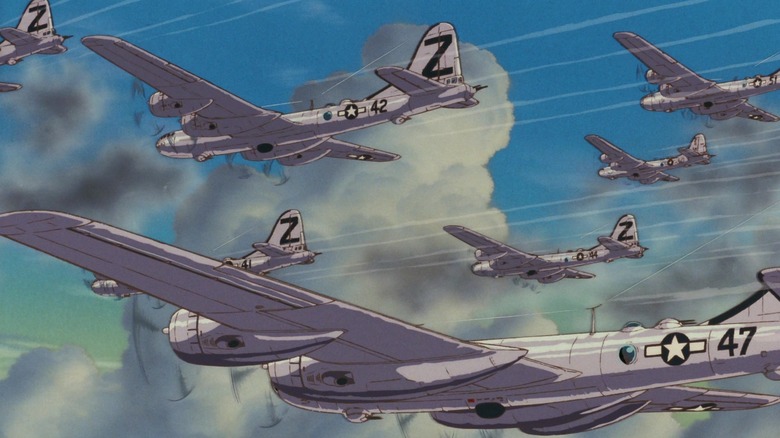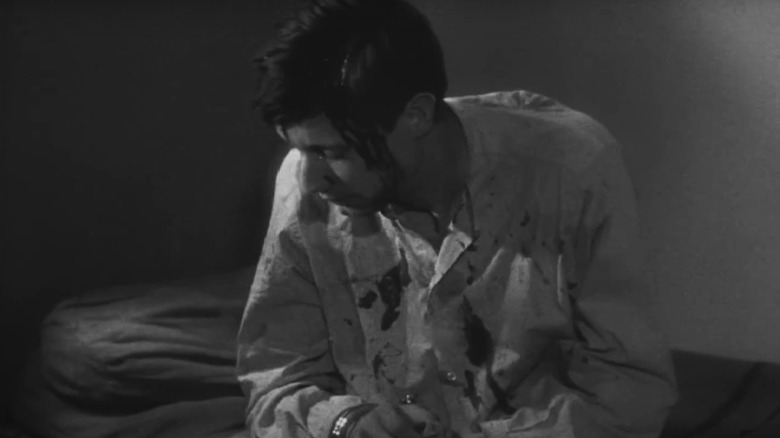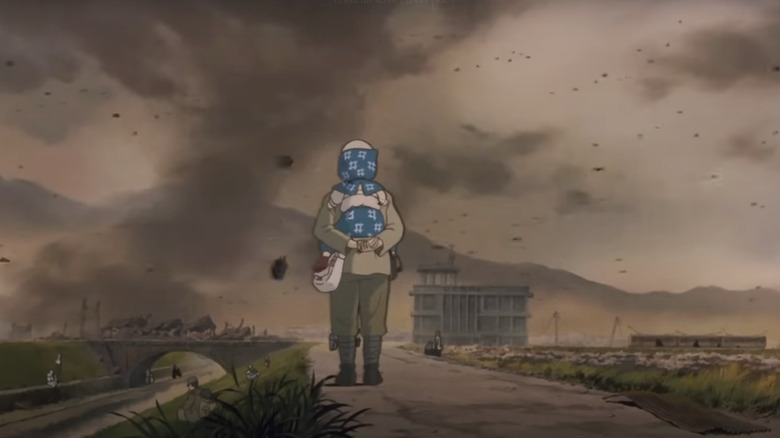There Are Only Two Perfect War Movies, According To Rotten Tomatoes
Rotten Tomatoes is a truly fascinating thing. Though it simply works by aggregating other critics' reviews, the site itself has become, whether we like it or not, somewhat of a tastemaker for the masses. It's odd to think that a site which doesn't actually review movies itself has taken on this role as a kind of cultural arbiter, yet here we are in 2024 when AI movies will soon be a thing and Kevin Hart's "Lift" tops the Netflix most-watched charts. But before we start lamenting the cultural landscape of the moment, here's a question for you — do you know how Rotten Tomatoes works?
Everyone pretty much knows that RT collects reviews for a film or TV show and spits out a percentage score based on how many of those reviews are positive. But how does Rotten Tomatoes judge a review to be positive? What is a "good" review? Does an okay review carry as much weight as one in which the critic hails the movie in question as an unequivocal masterpiece? It's not all that clear, really, is it?
Here's another conundrum for you. How meaningful is the elusive 100% Rotten Tomatoes score? Many films have claimed the perfect percentage, but what does it even mean? Let's see if we can figure any of this out by taking a look at Rotten Tomatoes' ranking of the best war movies of all time.
Rotten Tomatoes' ranking of the best war films
According to Rotten Tomatoes, there are only two perfect sci-fi movies, two perfect Alfred Hitchcock films, and two perfect horror movies. As you can see, two is seemingly the magic number when it comes to ranking a certain genre or director's work — though, in the case of the great John Travolta there are, apparently, no perfect movies and a full seven films with a zero percent rating. Sorry, John, we love you.
Anyway, the point here is that Rotten Tomatoes isn't just for seeing how well a film or show has fared among critics. Not only can you look up a certain actor or director and get an overview of their RT scores, the site itself regularly produces lists based on its Tomatometer scores, and often these lists simply advertise the limits of the whole enterprise.
Take the ranking of the 100 best war movies of all time. Once again, on this list you'll find that two films in the history of war cinema have managed to attain the coveted 100% score: 1988's "Grave of the Fireflies" and 1956's "A Man Escaped." Both these films have perfect RT scores, and are in the number one and two spot respectively on the site's list of the greatest war films.
Two of the great war movies
There's no doubt these two films deserve their high-ranking. 1988's animated war drama "Grave of the Fireflies" was universally lauded upon its release and remains infamous for traumatizing an entire generation as part of Studio Ghibli's equivalent of "Barbenheimer." Written and directed by Isao Takahata, the film is set in Kobe, Japan and follows siblings Seita and Setsuko, who have been orphaned during World War II. "Fireflies" is an often harrowing chronicle of the pair's attempts to survive as the war plays out, and has since been recognized not just as one of the best Japanese animated films, but, as its Rotten Tomatoes ranking shows, one of the greatest war movies of all time.
"A Man Escaped" was equally as celebrated when it released back in 1956. This one's also about World War II, but there's no animation in sight here. Director Robert Bresson based his film on the memoirs of French Resistance member André Devigny, who was held by the Germans in Montluc prison during the war. As you might have guessed from the title, Devigny managed to escape from captivity, which is exactly what François Leterrier does as Lieutenant Fontaine — Bresson's version of Devigny. But before the spoiler in the title is fulfilled, "A Man Escaped" treats its audience to some serious suspense and tension, as Fontaine plots his escape between hearing his fellow inmates being executed. All of which, it seems, made for an absolutely stellar critical response, with Roger Ebert going so far as to title his review "A Lesson in Cinema."
So, we know these movies are worthy of topping any list of the best war movies, but we're still not any clearer on what any of this actually means in the context of Rotten Tomatoes.
What on earth does a Rotten Tomatoes score mean?
One of the things that might seem obvious but which we're all guilty of overlooking when it comes to Rotten Tomatoes is the fact that the percentage score is not an evaluation of the film or show in question. Instead, it's an evaluation of the critical response itself. In the case of "Grave of the Fireflies," the film's "perfect" score is really just telling you that 100% of the 46 reviews collected by Rotten Tomatoes are positive — whatever that means. For "A Man Escaped," 100% of the 43 reviews on RT are positive. Not only does this mean that when you see an RT score proudly displayed in a trailer or in a streaming platform interface, that you're really seeing RT's evaluation of critics, not of the actual media, it also leaves the definition of "positive" unclear.
According to the site, a "team of curators" is in charge of deciding "if the reviews are Fresh or Rotten." But aside from the fact that this binary between "Fresh" and "Rotten" flattens all nuance, there's the question of what the specific criteria actually is here. No more is this dodgy rating system clear than in the actual number ratings these films receive. If you click on the 100% score on the films' pages, you'll see a breakdown, which in this case reveals "Grave of the Fireflies" — currently top of the best war movies list — was rated 9.40 out of ten, while "A Man Escaped" was rated 9.50. Why is the latter not in the number one spot? How are these number ratings produced and how are they different from the percentage score? God knows — or in this case, only the Rotten Tomatoes overlords know.
Why it's important to know what a Rotten Tomatoes score means
Why is any of this important? Well, it isn't inherently. The last thing Robert Bresson was worried about making "A Man Escaped" is whether it would elicit a cartoon tomato or splat. But if these scores are going to be as ubiquitous as they are, it pays to know what you're so frequently looking at.
In a time where the amount of media and cultural products on offer feels constantly overwhelming, we need things like Rotten Tomatoes just to help us make sense of things. The same way Google started as a way to make the increasingly vast internet an easier place to navigate, RT is providing a service designed to make sense of an increasingly bloated film and TV market.
But as so often happens with these tools designed for a practical purpose in the digital age, things start to drift the longer the tool exists. No longer are search results organized in order of their actual relevance or helpfulness, rather how well they play the SEO game and how much that plays into the algorithms at work behind the scenes. Similarly, no longer is RT simply telling you which movies might be worth a look. Not only is the audience score so easily manipulated that it's basically meaningless — as was the case with "The Acolyte" — a Tomato score is now often the only thing we'll look at when deciding whether to watch something or not. So, despite the fact that back in the 1950s Bresson wasn't concerned about his future chances with the Tomatometer, these days it does pay to be aware that RT, helpful though it is, is not the final word on whether a film is worth your time.




